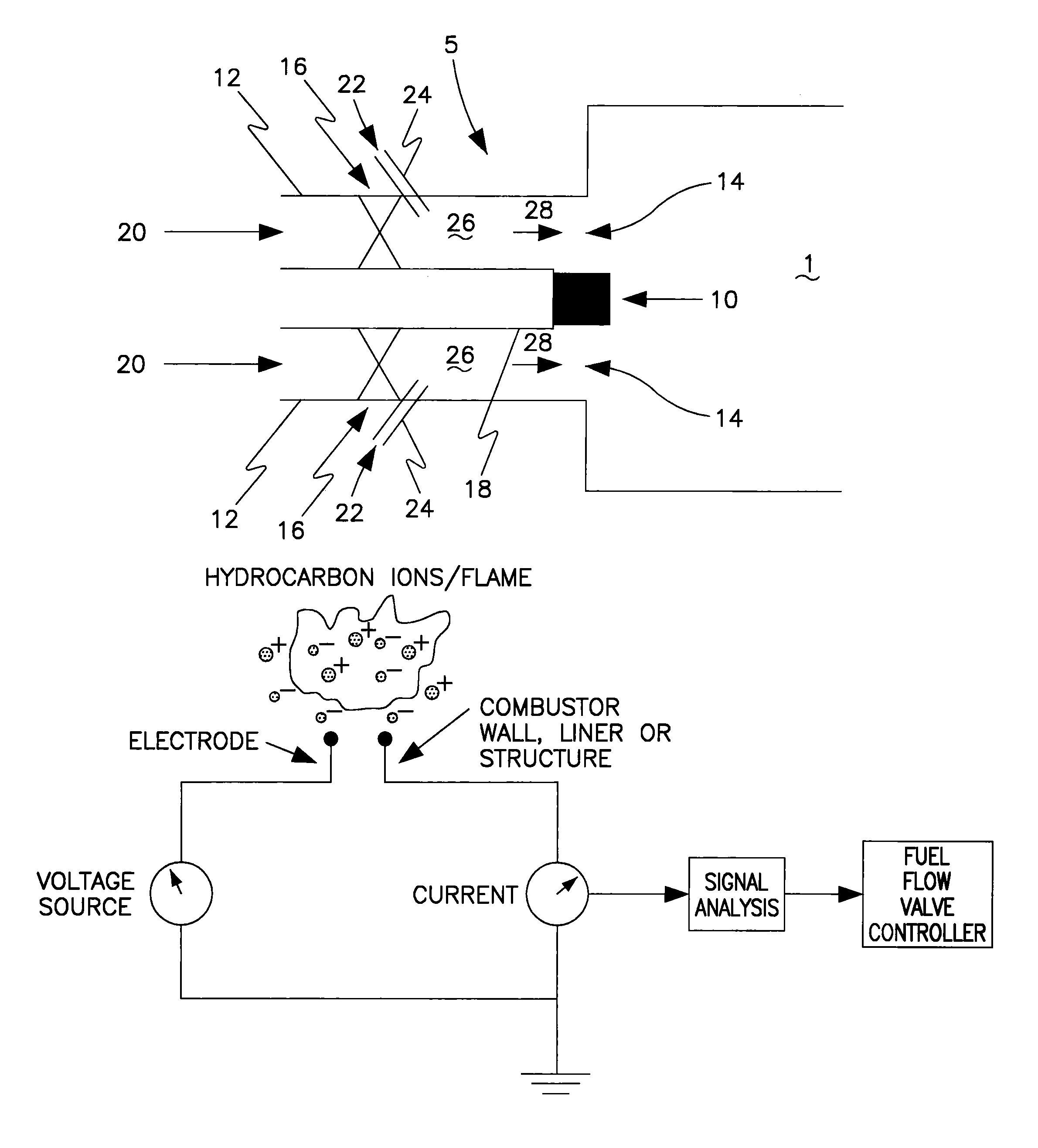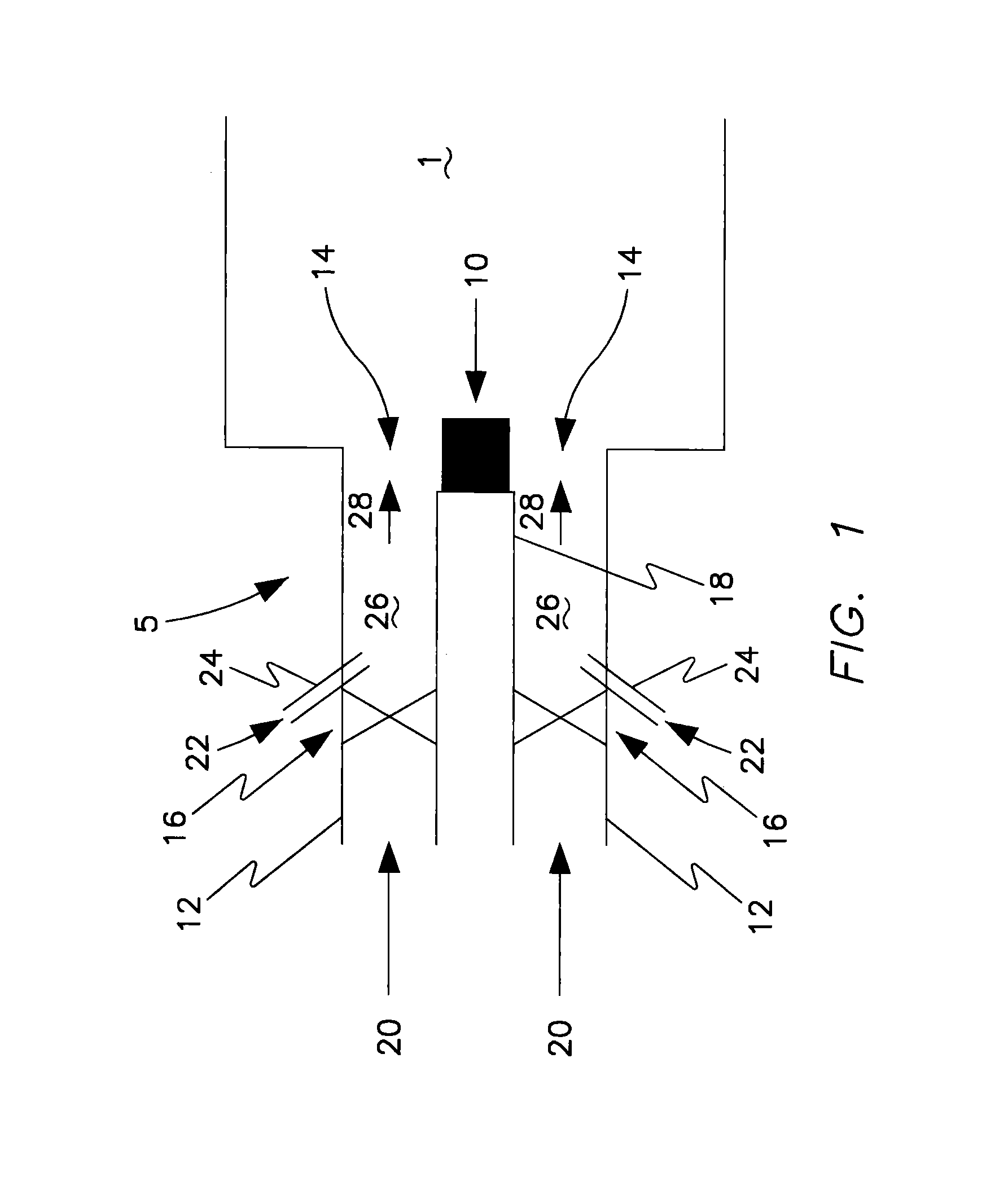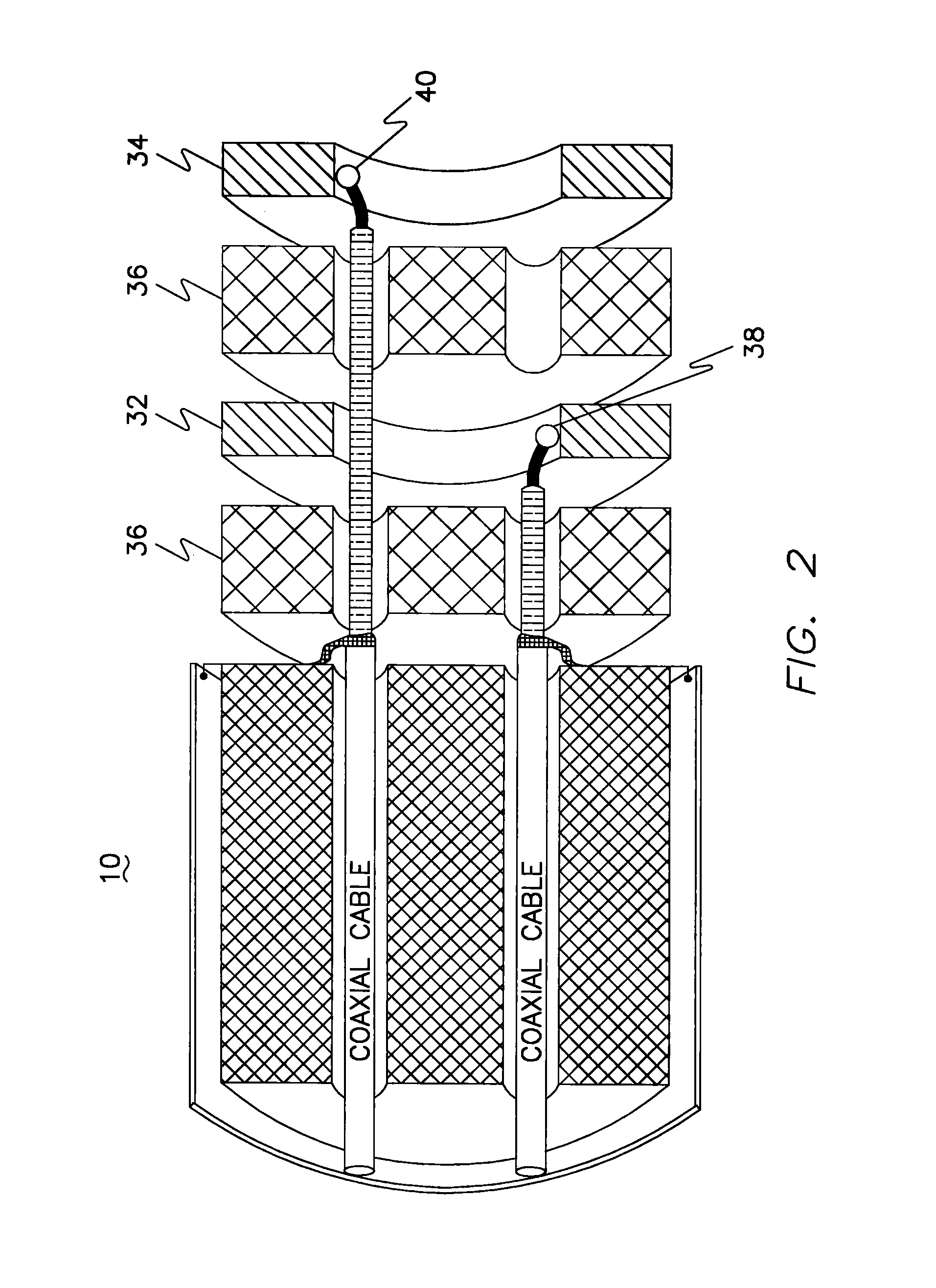Lean blowoff detection sensor
a detection sensor and sensor technology, applied in combustion-air/fuel-air treatment, ignition of turbine/propulsion engine, lighting and heating apparatus, etc., can solve problems such as flame anchoring, carbon monoxide generation, and inability to fully burn a fuel, and achieve the effect of being easily integrated into the burner assembly
- Summary
- Abstract
- Description
- Claims
- Application Information
AI Technical Summary
Benefits of technology
Problems solved by technology
Method used
Image
Examples
Embodiment Construction
[0042]In general, the apparatus of the present invention comprises; a combustion system, a means for supplying fuel and an oxidizer, a device for igniting the fuel and oxidizer in order to initiate combustion, and a sensor for determining the concentration of hydrocarbon ions and / or electrons as a function of time. The combustion system comprises a fuel nozzle and an outer shell attached to the combustion nozzle. The outer shell defines a combustion chamber. Preferably the nozzle is a lean premix fuel nozzle.
[0043]Fuel and an oxidizer are provided to the combustion nozzle at separate rates. The fuel and oxidizer are ignited thereby initiating the combustion process, which produces a flame. Products of the combustion process include hydrocarbon ions and / or electrons.
[0044]A sensor is positioned within the combustion system of the type disclosed in the incorporated U.S. Pat. No. 6,429,020; however, the present invention requires only one electrode, for instance the guard electrode, bu...
PUM
 Login to View More
Login to View More Abstract
Description
Claims
Application Information
 Login to View More
Login to View More - R&D
- Intellectual Property
- Life Sciences
- Materials
- Tech Scout
- Unparalleled Data Quality
- Higher Quality Content
- 60% Fewer Hallucinations
Browse by: Latest US Patents, China's latest patents, Technical Efficacy Thesaurus, Application Domain, Technology Topic, Popular Technical Reports.
© 2025 PatSnap. All rights reserved.Legal|Privacy policy|Modern Slavery Act Transparency Statement|Sitemap|About US| Contact US: help@patsnap.com



